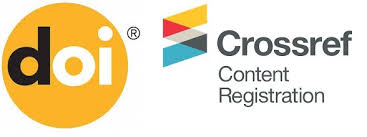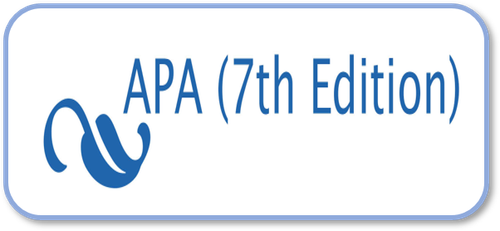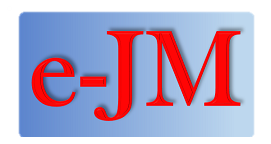Upgrading SME’s Marketing Performance: Adaptive, Innovative Capability, and Isolating Mechanism
DOI:
https://doi.org/10.24912/jm.v29i1.2281Abstract
Business competition requires companies always to behave adaptively, but not all adaptations carried out by companies can improve performance. Because of that, this research aims to examine the role of adaptive capability, isolating mechanism product advantage, and product innovation capability on marketing performance in a research model. This research was conducted using a sample of 271 owners of Batik Tulis business in Barlingmascakeb, Central Java. Sampling was done using a purposive sampling technique, and the research method used was SEM-AMOS. The research results show that adaptive capability, isolating mechanism product advantage, and product innovation capability have proven to improve marketing performance in Batik Tulis SMEs. However, the relationship between adaptive capability cannot be proven to influence product innovation capability. Adaptive capability also plays a key role in improving marketing performance because it has the most significant influence compared to other variables used in this research.
References
Abbas, J., Balsalobre-Lorente, D., Amjid, M. A., Al-Sulaiti, K., Al-Sulaiti, I., & Aldereai, O. (2024). Financial Innovation And Digitalization Promote Business Growth: The Interplay Of Green Technology Innovation, Product Market Competition And Firm Performance. Innovation and Green Development, 3(1), 100111. https://doi.org/10.1016/j.igd.2023.100111.
Aksoy, H. (2017). How Do Innovation Culture, Marketing Innovation And Product Innovation Affect The Market Performance Of Small And Medium-Sized Enterprises (SMEs)? Technology in Society, 51, 133–141. https://doi.org/10.1016/j.techsoc.2017.08.005.
Algarni, M. A., Ali, M., Albort-Morant, G., Leal-Rodriguez, A. L., Latan, H., Ali, I., & Ullah, S. (2022). Make Green, Live Clean! Linking Adaptive Capability And Environmental Behavior With Financial Performance Through Corporate Sustainability Performance. Journal of Cleaner Production, 346, 131156. https://doi.org/10.1016/j.jclepro.2022.131156.
Ali, S., Wu, W., & Ali, S. (2022). Adaptive marketing capability and product innovations: the role of market ambidexterity and transformational leadership (evidence from Pakistani manufacturing industry). European Journal of Innovation Management, 25(4), 1056–1091. https://doi.org/10.1108/EJIM-12-2020-0520.
Arsawan, I. W. E., Koval, V., Rajiani, I., Rustiarini, N. W., Supartha, W. G., & Suryantini, N. P. S. (2022). Leveraging Knowledge Sharing And Innovation Culture Into Smes Sustainable Competitive Advantage. International Journal of Productivity and Performance Management, 71(2), 405–428. https://doi.org/10.1108/IJPPM-04-2020-0192.
Barlow, M. A., Verhaal, J. C., & Angus, R. W. (2019). Optimal Distinctiveness, Strategic Categorization, And Product Market Entry On The Google Play App Platform. Strategic Management Journal, 40(8), 1219–1242. https://doi.org/10.1002/smj.3019.
Chang, C. Y., Tsai, K. H., & Sung, B. (2024). Can Market Knowledge Lead To Radical Product Innovation Performance? The Double-Edged Sword Effect Of Absorptive Capacity. European Journal of Innovation Management, 27(2), 403–423. https://doi.org/10.1108/EJIM-01-2022-0058.
Chatterjee, S., Chaudhuri, R., & Vrontis, D. (2024). Does Data-Driven Culture Impact Innovation And Performance Of A Firm? An Empirical Examination. Annals of Operations Research, 333(2–3), 601–626. https://doi.org/10.1007/s10479-020-03887-z.
Chinakidzwa, M., & Phiri, M. (2020). Impact Of Digital Marketing Capabilities On Market Performance Of Small To Medium Enterprise Agro-Processors In Harare, Zimbabwe. Business: Theory and Practice, 21(2), 746–757. https://doi.org/10.3846/btp.2020.12149.
Dmitry Sharapov & MacAulay, S. C. (2022). Design as an Isolating Mechanism for Capturing Value from Innovation: From Cloaks and Traps to Sabotage. Academy of Management Review, 47(1), 9–15. https://doi.org/10.5465/amr.2018.0413.
Elgarhy, S. D., & Abou-Shouk, M. (2023). Effects Of Entrepreneurial Orientation, Marketing, And Innovation Capabilities On Market Performance: The Mediating Effect Of Sustainable Competitive Advantage. International Journal of Contemporary Hospitality Management, 35(6), 1986–2004. https://doi.org/10.1108/IJCHM-04-2022-0508.
Falahat, M., Ramayah, T., Soto-Acosta, P., & Lee, Y. Y. (2020). SMEs Internationalisation: The Role Of Product Innovation, Market Intelligence, Pricing And Marketing Communication Capabilities As Drivers Of SMEs’ International Performance. Technological Forecasting and Social Change, 152(January), 119908. https://doi.org/10.1016/j.techfore.2020.119908.
Farida, I., & Setiawan, D. (2022). Business Strategies and Competitive Advantage: The Role of Performance and Innovation. Journal of Open Innovation: Technology, Market, and Complexity, 8(3), 163. https://doi.org/10.3390/joitmc8030163.
Fatonah, S., & Haryanto, A. T. (2022). Exploring Market Orientation, Product Innovation And Competitive Advantage To Enhance SMEs' Performance Under Uncertain Events. Uncertain Supply Chain Management, 10(1), 161–168. https://doi.org/10.5267/j.uscm.2021.9.011.
Hair, J. F., Risher, J. J., Sarstedt, M., & Ringle, C. M. (2019). When To Use And How To Report The Results Of PLS-SEM. European Business Review, 31(1), 2–24. https://doi.org/10.1108/EBR-11-2018-0203.
Handoyo, S., Suharman, H., Ghani, E. K., & Soedarsono, S. (2023). A Business Strategy, Operational Efficiency, Ownership Structure, And Manufacturing Performance: The Moderating Role Of Market Uncertainty And Competition Intensity And Its Implication On Open Innovation. Journal of Open Innovation: Technology, Market, and Complexity, 9(2), 100039. https://doi.org/10.1016/j.joitmc.2023.100039.
Harianto, Rahayu, S., & Saragih, M. G. (2019). Improved Marketing Performance and Product Innovation for The Optimisation of Competitive Advantage. Journal of International Conference Proceedings, 2(1), 79–84. https://doi.org/10.32535/jicp.v2i3.646.
Harjadi, D., Fatmasari, D., & Nurhasanah, A. S. (2020). Market Orientation And Product Innovation To Increase Competitive Advantages And Its Impact On Marketing Performance. Al-Amwal : Jurnal Ekonomi Dan Perbankan Syari’ah, 12(1), 12. https://doi.org/10.24235/amwal.v1i1.5457
Ho, H., Osiyevskyy, O., Agarwal, J., & Reza, S. (2020). Does Ambidexterity In Marketing Pay Off? The Role Of Absorptive Capacity. Journal of Business Research, 110(December 2019), 65–79. https://doi.org/10.1016/j.jbusres.2019.12.050.
Hunt, S. D., & Madhavaram, S. (2020). Adaptive Marketing Capabilities, Dynamic Capabilities, And Renewal Competences: The “Outside Vs. Inside” And “Static Vs. Dynamic” Controversies In Strategy. Industrial Marketing Management, 89(July), 129–139. https://doi.org/10.1016/j.indmarman.2019.07.004.
Ishak, S., Shaharudin, M. R., Salim, N. A. M., Zainoddin, A. I., & Deng, Z. (2023). The Effect of Supply Chain Adaptive Strategies During the COVID-19 Pandemic on Firm Performance in Malaysia’s Semiconductor Industries. Global Journal of Flexible Systems Management, 24(3), 439–458. https://doi.org/10.1007/s40171-023-00347-y.
Jatmiko, B., Udin, U., Raharti, R., Laras, T., & Ardhi, K. F. (2021). Strategies for MSMEs to Achieve Sustainable Competitive Advantage: The SWOT Analysis Method. Journal of Asian Finance, Economics and Business, 8(3), 505–515. https://doi.org/10.13106/jafeb.2021.vol8.no3.0505.
Joensuu-Salo, S., Sorama, K., Viljamaa, A., & Varamäki, E. (2018). Firm Performance Among Internationalized SMEs: The Interplay Of Market Orientation, Marketing Capability And Digitalization. Administrative Sciences, 8(3). https://doi.org/10.3390/admsci8030031.
Ndegwa, P. W., Kilika, J. M., & Muathe, S. M. A. (2018). Resource Isolating Mechanisms and Sustainable Competitive Advantage Among Commercial Banks in Kenya. European Scientific Journal ESJ, 14(34), 38–64. https://doi.org/10.19044/esj.2018.v14n34p38.
Nuryakin, N., & Maryati, T. (2022). Do Green Innovation And Green Competitive Advantage Mediate The Effect Of Green Marketing Orientation On Smes’ Green Marketing Performance? Cogent Business and Management, 9(1). https://doi.org/10.1080/23311975.2022.2065948.
Nuta, A. C., Habib, A. M., Neslihanoglu, S., Dalwai, T., & Rangu, C. M. (2024). Analysing The Market Performance Of Romanian Firms: Do The COVID-19 crisis and classification type matter? International Journal of Emerging Markets, 1–19. https://doi.org/10.1108/IJOEM-05-2023-0842.
Phuong, L. N., Tuan, K. C., Duc, N. N., & Thi, U. N. (2022). The Impact of Absorption Capability, Innovation Capability, and Branding Capability on Firm Performance An Empirical Study on Vietnamese Retail Firms. Sustainability (Switzerland), 14(11). https://doi.org/10.3390/su14116422.
Purvis, B., Mao, Y., & Robinson, D. (2019). Three Pillars Of Sustainability : In Search Of Conceptual Origins. Sustainability Science, 14(3), 681–695. https://doi.org/10.1007/s11625-018-0627-5.
Qiu, L., Jie, X., Wang, Y., & Zhao, M. (2020). Green Product Innovation, Dynamic Capability, And Competitive Advantage: Evidence From Chinese Manufacturing Enterprises. Corporate Social Responsibility and Environmental Management, 27(1), 146–165. https://doi.org/10.1002/csr.1780.
Reimann, C., Carvalho, F., & Duarte, M. (2021). The Influence Of Dynamic And Adaptive Marketing Capabilities On The Performance Of Portuguese SMEs In The B2b International Market. Sustainability (Switzerland), 13(2), 1–23. https://doi.org/10.3390/su13020579.
Reimann, C. K., Carvalho, F. M. P. de O., & Duarte, M. P. (2022). Adaptive Marketing Capabilities, Market Orientation, And International Performance: The Moderation Effect Of Competitive Intensity. Journal of Business and Industrial Marketing, 37(12), 2533–2543. https://doi.org/10.1108/JBIM-08-2021-0391.
Riptiono, S. (2022). The Effects of Consumption Value, Environmental Concerns, and Consumer Attitudes Towards Consumer Purchase Intentions of Electric Cars. Jurnal Aplikasi Manajemen Dan Bisnis, 8(1), 23–32. https://doi.org/10.17358/jabm.8.1.23.
Robertson, J., Caruana, A., & Ferreira, C. (2023). Innovation Performance: The Effect Of Knowledge-Based Dynamic Capabilities In Cross-Country Innovation Ecosystems. International Business Review, 32(2), 101866. https://doi.org/10.1016/j.ibusrev.2021.101866.
Sadeghi, A., Aliasghar, O., & Bouguerra, A. (2023). Unpacking The Relationship Between Post-Entry Speed Of Internationalization And Export Performance Of SMEs: A Capability-Building Perspective. Journal of International Management, 29(1), 100982. https://doi.org/10.1016/j.intman.2022.100982.
Saeed, M., Adiguzel, Z., Shafique, I., Kalyar, M. N., & Abrudan, D. B. (2023). Big Data Analytics-Enabled Dynamic Capabilities And Firm Performance: Examining The Roles Of Marketing Ambidexterity And Environmental Dynamism. Business Process Management Journal, 29(4), 1204–1226. https://doi.org/10.1108/BPMJ-01-2023-0015.
Salah, O. H., & Ayyash, M. M. (2024). E-Commerce Adoption By SMEs And Its Effect On Marketing Performance: An Extended Of TOE Framework With AI Integration, Innovation Culture, And Customer Tech-Savviness. Journal of Open Innovation: Technology, Market, and Complexity, 10(1), 100183. https://doi.org/10.1016/j.joitmc.2023.100183.
Sánchez‐Montesinos, F., Opazo Basáez, M., Arias Aranda, D., & Bustinza, O. F. (2018). Creating isolating mechanisms through digital servitisation: The case of Covirán. Strategic Change, 27(2), 121–128. https://doi.org/10.1002/jsc.2187.
Santos-Vijande, M. L., López-Sánchez, J. Á., Loredo, E., Rudd, J., & López-Mielgo, N. (2022). Role Of Innovation And Architectural Marketing Capabilities In Channelling Entrepreneurship Into Performance. Journal of Innovation and Knowledge, 7(2). https://doi.org/10.1016/j.jik.2022.100174.
Setyaningrum, R. P., Kholid, M. N., & Susilo, P. (2023). Sustainable SMEs Performance and Green Competitive Advantage: The Role of Green Creativity, Business Independence and Green IT Empowerment. Sustainability (Switzerland), 15(15). https://doi.org/10.3390/su151512096.
Sharfaei, S., Wei Ong, J., & Ojo, A. O. (2023). The Impact Of Market Uncertainty On International SME Performance. Cogent Business and Management, 10(1). https://doi.org/10.1080/23311975.2023.2198160.
Somwethee, P., Aujirapongpan, S., & Ru-zhue, J. (2023). The Influence Of Entrepreneurial Capability And Innovation Capability On Sustainable Organisation Performance: Evidence Of Community Enterprise In Thailand. Journal of Open Innovation: Technology, Market, and Complexity, 9(May), 100082. https://doi.org/10.1016/j.joitmc.2023.100082.
Tapanainen, T., Dao, K. T., Thanh, H. N. T., Nguyen, H. T., Dang, N. B., & Nguyen, N. D. (2022). Impact Of Dynamic Capabilities And Firm Characteristics On The Firm Performance Of Vietnamese Small And Medium-Sized Retail Enterprises. International Journal of Management and Enterprise Development, 21(1), 28–61. https://doi.org/10.1504/IJMED.2022.120539.
Vaske, J. J., Beaman, J., & Sponarski, C. C. (2017). Rethinking Internal Consistency in Cronbach’s Alpha. Leisure Sciences, 39(2), 163–173. https://doi.org/10.1080/01490400.2015.1127189.
Wiwoho, G., Suroso, A., & Wulandari, S. Z. (2020). Linking Adaptive Capability, Product Innovation And Marketing Performance: Results From Indonesian SMEs. Management Research Review, 10, 2379–2384. https://doi.org/10.5267/j.msl.2020.2.027.
Wongsansukcharoen, J., & Thaweepaiboonwong, J. (2023). Effect Of Innovations In Human Resource Practices, Innovation Capabilities, And Competitive Advantage On Small And Medium Enterprises’ Performance In Thailand. European Research on Management and Business Economics, 29(1), 100210. https://doi.org/10.1016/j.iedeen.2022.100210.
Zahoor, N., & Lew, Y. K. (2023). Enhancing International Marketing Capability And Export Performance Of Emerging Market SMEs In Crises: Strategic Flexibility And Digital Technologies. International Marketing Review, 40(5), 1158–1187. https://doi.org/10.1108/IMR-12-2021-0350.
Downloads
Published
How to Cite
Issue
Section
License
Copyright (c) 2025 Jurnal Manajemen

This work is licensed under a Creative Commons Attribution-NonCommercial-ShareAlike 4.0 International License.
This journal provides immediate open access to its content on the principle that making research freely available to the public supports a greater global exchange of knowledge.

This work is licensed under a Creative Commons Attribution-NonCommercial-ShareAlike 4.0 International License



















